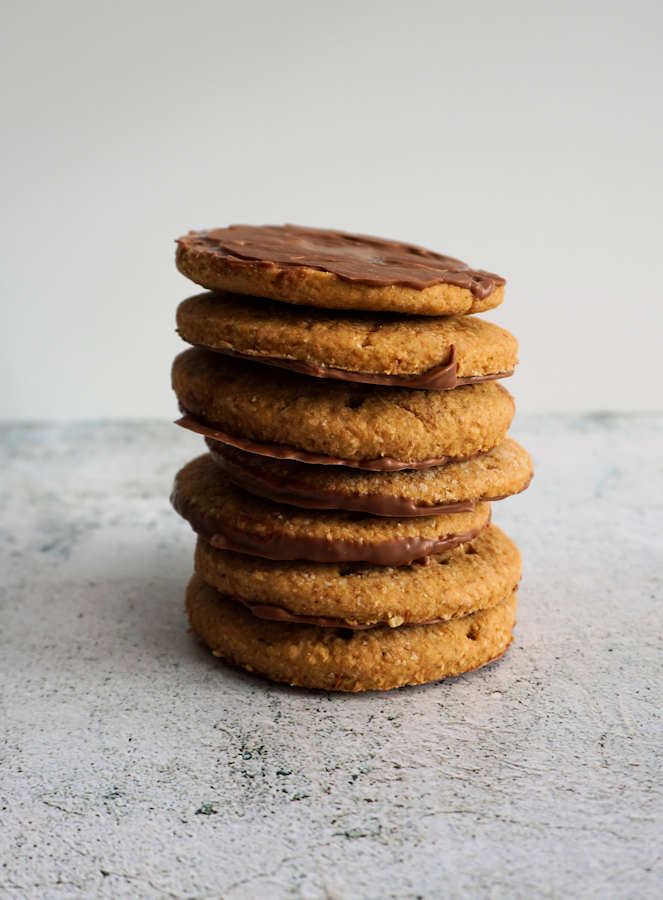Are digestives really digestive? Even when coated in milk chocolate? Not really, but it’s fun to make at home what we usually know only from a packet.

Tastes like shop bought!
‘Baked like bought’ is an interesting, albeit a bit pointless project aiming to try to reproduce things we normally only know from a packet. It most usually reveals itself in the cake and biscuits department – we don’t try to make Coca-Cola at home, thank heavens.
Biscuits are something of a cult thing in the United Kingdom. Something that the folks over in the United States not only don't quite understand, but their concept of a 'biscuit' is totally different. While here, say 'digestives' and everyone knows it's a house name. Likewise hobnobs or custard creams.
The secret of a biscuit
I made my own replica of Fox’s Crunch Creams before, first without the cream, just crunchy; and subsequently with the filling, disguised as valentine biscuits. The main problem as I found is to hit the right bakedness of the confections.
A biscuit is a biscuit to be honest: the addition of cornflour to plain flour makes it softer. Brown sugar instead of caster makes them chewy. More butter makes for the shorter texture, obviously, and eggs decide that it’s a richer little cake.
But to bake a batch or – even more difficult – several exactly to the required doneness is a trick hard to achieve without industrial ovens equipped with precise thermometers instead of the cook opening the oven every three minutes to ‘see how it’s doing’.
And whenever I do any test baking, I always promise myself to only vary one element at a time. Make a batch – bake it for 10 minutes. Make the second batch – bake exactly as long so you can see what difference varying the ingredients has made. But no – I always try to outsmart myself and not only change the type of sugar but the baking time too.
This time however I was being very disciplined, plus I engaged an expert tester. It was this friend of mine who reminded me of the existence of digestive biscuits, incidentally.
Why are digestives called digestives?
Digestive biscuits sound like an oxymoron – and they are. The ‘digestive’ benefits ascribed to the biccie, invented in Scotland by two medics in late 19th century, were represented by the wholemeal flour content. Indeed, compared to refined cookies, all-white flour and all-white sugar, it is a positively healthy snack. I wouldn’t necessarily rely on it though if I suffered from icky tummy.
My interpretation of a digestive biscuit is pretty authentic, as attested by mentioned expert – he is a dedicated fan of digestive biscuits.
Just like McVities
The key quality of digestives that I sought to reproduce is their texture: like sawdust swept off the flour and packed into a biscuit shape. That is achieved by a mix of wholemeal and plain flours with a handful of porridge oats – to reinforce the sawdust quality – thrown in.
I started off using brown sugar in my biscuits and personally preferred that version but helas! not quite like the real McVity. Icing sugar turns out to serve the authenticity better.
The coating is optional but I can never resist a chance of dipping things in chocolate. If you prefer dark chocolate, use it – it will make the digestives more ‘digestive’.